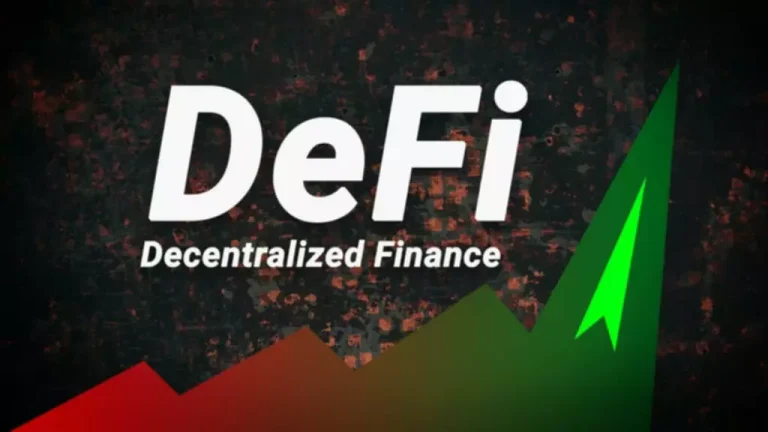Content
This is why many retail high frequency forex trading investors tend to avoid venturing into HFT, as the financial requirements can be challenging to sustain over the long term. However, many retail traders claim they can participate in HFT by using EAs, or by learning programming languages and developing an automated trading software. Company news, often available in electronic text format from various sources, provides opportunities for news-based trading.
What are the best stock brokers for high-frequency trading?
HFT firms generally use private money, technology, and strategies to generate profits. Using powerful computer algorithms to execute many orders in fractions of a second is big business but Stockbroker not necessarily easy for the general public to understand. High-frequency trading (HFT) firms regard their methods and strategies as trade secrets, further enshrouding them in mystery. High-frequency trading is a growing phenomenon in the financial world, but it’s been around for several years. It involves using computer algorithms to place trades at a very high rate of speed, often within a fraction of a second.
The State of HFT In The Trading Industry
Yes, though its profitability varies in different market conditions, how well competitors are keeping up with technological advances, and regulatory changes. In its early years, when there were fewer participants, HFT was highly profitable for many firms. While smaller firms do exist and leverage advanced quantitative strategies, it’s https://www.xcritical.com/ also a field that requires high levels of computing power and the fastest network connections to make HFT viable. HFT firms also face significant risks during periods of high market volatility. Rapid price moves can lead to large, unexpected losses, especially if the firm’s algorithms don’t perform as expected under stress. Changes in market structure, trading volume, or liquidity can affect the firms’ HFT strategies, leading to reduced gains or greater losses.
The Backbone of HFT: Algorithms and Technology
As technology advanced, the ability to process trades more quickly and efficiently led to the development of HFT. For arbitrage traders, this creates a small window of opportunity to buy and sell shares that will be added to, or removed from, index funds. High-frequency trading, or HFT, is a strategy that involves executing a large number of orders quickly – within seconds. The aim is to capture a small amount of profit, sometimes a fraction of a cent, on each trade.
Statistical arbitrage refers to exploiting short-term statistical inefficiencies in market prices across securities or exchanges to earn riskless profits. Statistical arbitrage aims to profit from temporary mispricings between historically correlated securities. Algorithms monitor hundreds or thousands of instruments across markets to find co-dependent relationships. Machine learning uncovers complex statistical interrelationships between securities in different sectors and asset classes.
The rapid rise of high-frequency trading came into the public spotlight in the May 6, 2010, Flash Crash. On that day, the Dow Jones Industrial Average plunged over 600 points in minutes before rebounding almost as quickly. An SEC investigation found that HFT strategies exacerbated the decline by rapidly pulling liquidity from the market.
The information and opinions in this report are for general information use only and are not intended as an offer or solicitation with respect to the purchase or sale of any currency or CFD contract. All opinions and information contained in this report are subject to change without notice. This report has been prepared without regard to the specific investment objectives, financial situation and needs of any particular recipient. Any references to historical price movements or levels is informational based on our analysis and we do not represent or warranty that any such movements or levels are likely to reoccur in the future. On the hardware side, FPGAs, GPUs, and parallel processing accelerate data analysis and order generation. Latency arbitrage is ultimately a technological arms race to shave off microseconds.
Finding success and making money with an HFT system will depend largely on which HFT system you’ve chosen, and on your HFT program’s configurations. High-frequency trading (HFT) uses algorithms and extremely fast connections to make rapid trades, often in fractions of a second. It frequently involves the use of proprietary tools and computer programs that analyze markets, identify trends, and execute trades for very short-term gains. We’ll discuss the characteristics of high-frequency trading, strategies, pros and cons, and examples of how high-frequency trading has affected markets. Critics argue that it creates an unfair market, as it allows larger companies with access to more powerful technology to gain an advantage over retail traders. And it might even enable them to ‘jump the queue’ to better prices because of the faster connection to price data.
Some of the best-known HFT firms include Tower Research Capital, Citadel LLC, and Virtu Financial. Because of the complexities and intricacies involved with HFT, it isn’t surprising that it is commonly used by banks, other financial institutions, and institutional investors. In highly volatile scenarios, malevolent agents may initiate DDOS attacks to obstruct others’ access to the market, causing your scrapper to fail.
Strategies are back-tested extensively before live deployment to weed out undesirable behaviors. Firms meticulously monitor system performance and trading results to identify any potential bugs or degraded accuracy. In addition, HFT returns have declined over the years as the strategy has become more widespread and competitive.
Index arbitrage strategies are based on exploiting periods where pension funds and investment firms rebalance their offerings on global indices to ensure they reflect the underlying index accurately. High-frequency arbitrage trading involves buying and selling large quantities of an asset that has a price imbalance to exploit slight price differences for the same asset on different exchanges. Even the liquidity HFT creates only lasts a few seconds, so it’s often dubbed ‘ghost liquidity’ as it has no real benefit to most market participants, yet large firms receive fees from exchanges for the service. Plus, the use of algorithms means traders can spend less time monitoring markets themselves and make decisions based on rationality rather than emotions. High-frequency trading (HFT) is a practice used to execute large orders quickly and take advantage of market inefficiencies.
For example, order anticipation strategies might try to foresee or infer that a large buyer or seller is in the market. Propriety traders employ many strategies to make money for their firms; some are commonplace, and others are more controversial. Note that these are all extremely short-term strategies, using automated moves using statistical properties that would not give success in buy-and-hold trading. Estimates put about half of all trading across the U.S. (up to 60%) and Europe (about 35%) in the high-frequency category. HFT companies employ diverse strategies to trade and force returns from faster-than-lighting trades. The strategies include arbitrage; global macro, long, and short equity trading; and passive market making.
- Opponents of HFT argue that algorithms can be programmed to send hundreds of fake orders and cancel them in the next second.
- Exchanges must invest heavily in speed enhancements like colocation services and faster network routing to stay competitive.
- Such “spoofing” momentarily creates a false spike in demand/supply, leading to price anomalies, which can be exploited by HFT traders to their advantage.
- The strategies include arbitrage; global macro, long, and short equity trading; and passive market making.
- Flash crashes triggered by HFTs also undermine overall market confidence.
- Another set of high-frequency trading strategies are strategies that exploit predictable temporary deviations from stable statistical relationships among securities.
This highlighted the risks created by the stock market’s growing reliance on high-frequency traders. And the prospect of costly glitches is also scaring away potential participants. Now that you’ve seen our picks for the best high-frequency trading platforms, check out the ForexBrokers.com Overall Rankings. We’ve evaluated over 60 forex brokers, using a testing methodology that’s based on 100+ data-driven variables and thousands of data points. Steven Hatzakis is a well-known finance writer, with 25+ years of experience in the foreign exchange and financial markets.


